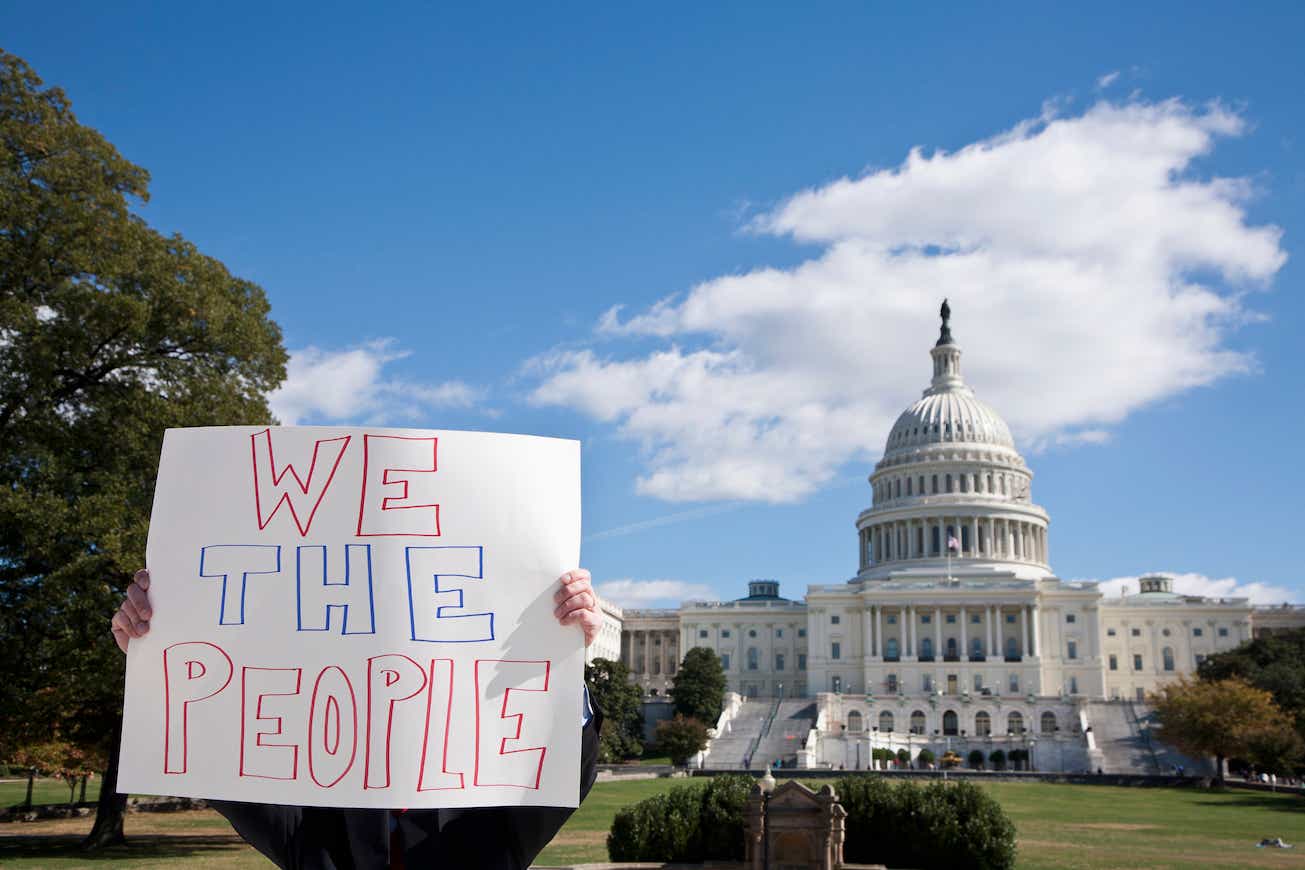It’s been 233 years since the Constitution came into effect and making amendments to it is incredibly difficult, especially in today’s polarized environment.
In the last two centuries, humans have evolved, technology has transformed our lives, science has progressed — in short, how we live our lives has drastically changed. One thing that’s remained largely the same? The U.S. Constitution. America is still living with rules and regulations drafted for a different kind of world (remember that one before computers, the internet, iPhones, and a woman’s right to vote?).
The Constitution came into effect in March 1789 — 233 years ago. Back then, the U.S. population was less than four million people. In the last two centuries, the population has grown to 330 million, technology has advanced, industry has progressed, globalization has changed the way we interact with each other, climate change has become a threat — we could go on. Why doesn’t the rulebook we’re meant to live by evolve with us? Well, it can, technically…but it’s incredibly difficult to make changes to it.
How can the Constitution be changed?
The founders of the Constitution predicted well — they knew change would be necessary for the document to stay relevant. So, they built in a provision for amending the document. Article V offers a legislative process to introduce changes (known as amendments) to the Constitution. However, the process is complicated.
To amend the Constitution, the following must happen:
Step 1 – Proposal: Two-thirds of both Houses of Congress must propose an amendment. Alternatively, two-thirds of states must request an amendment through a convention.
Step 2 – Ratification: The amendment has to then be ratified either by three-fourths of state legislatures or by three-fourths of state conventions called for ratification.
Why is it so hard to change the constitution?
In a nation that’s become much more polarized in the last decade, Democrats and Republicans are becoming increasingly ideologically divided. Simultaneously, people’s representatives in the Congress have also moved further away from the ideological center. This means that it’s harder to get representatives to agree across the aisle on common policy changes. With increasing divides, it’s more difficult (if not impossible) to reach the two-thirds majority needed to propose a change and even harder to reach the three-fourths majority needed to ratify it. Can you imagine 38 states agreeing on anything in these times?
For society, this means stagnation. It means the nation continues to be bound by rules and regulations that were made centuries ago instead of ones catered to and defined by present-day realities.
Since the constitution came into effect, over 11,000 amendments have been proposed. You read that right — 11,000. Now that’s a hefty number. Among them, only 27 (0.25 percent) have made it through the proposal and ratification process. That’s one amendment every 14 years on average, not counting the first 10 amendments that were adopted as the Bill of Rights in 1789.
The last amendment (the 27th) was a particularly interesting one. It was proposed in 1789 by Congress, aiming to limit the power of congressmen (of course, it was all congressmen back then) in influencing and determining their own salaries. At the time, it was ratified by only six states. Two centuries later, it was withering with the other 11,000 unratified proposed amendments. This is when Gregory Watson, a sophomore at the University of Texas, found the proposed amendment, wrote a paper about it (on which he got a C), and set out on a mission to get it ratified. The proposal did not mention any time limit for ratification, so Watson had that unlimited time on his side. By 1992, 38 states had ratified it and the amendment was adopted.
Although the 27th amendment makes for interesting dinner table conversation, it’s an aberration. The norm is that bills languish in dusty quarters, taking with them the progress and evolution they promised.
Which Constitutional amendments have been adopted?
Among the 27 amendments that were able to jump through the hoops of the legislative process set out by Article V are the right to bear arms (2nd amendment), jury trial (7th amendment), abolition of slavery (13th), and women’s right to vote (17th). The first 10 amendments, ratified in 1791, were strongly advocated for by James Madison in the first Congress and make up the Bill of Rights. They focus on granting Americans their civil rights and liberties.
Why are amendments important?
In a world where the U.S. population has grown from 4 million to 330 million and grown significantly more diverse, the challenges that face society have changed. In an ever-changing world, amendments are essential to keep the Constitution relevant through evolution — to ensure that it addresses the realities of today. The U.S. Constitution is known to be among the hardest to amend. Meanwhile, Germany amends its Constitution once every year and France makes amendments almost every two years.
Thomas Jefferson wrote, “Every constitution then, & every law, naturally expires at the end of 19 years. If it be enforced longer, it is an act of force, & not of right.” He could see that rules come with expiration dates; at some point, they no longer remain relevant and need a refresh. To hold on to rules from two centuries ago is to hinder the process of evolution.
Perhaps America needs an amendment to amend the process of Constitutional amendments.








